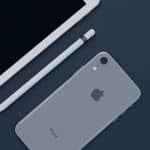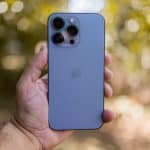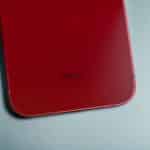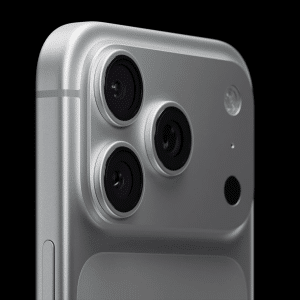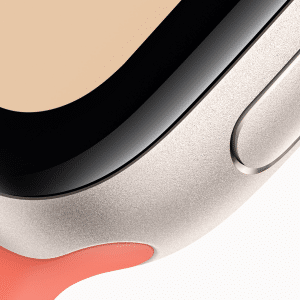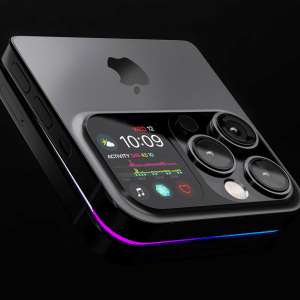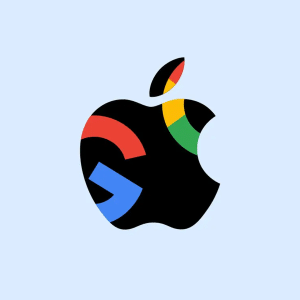Gadgets with unusual colors and surface patterns aren’t new. Apple and other companies have offered these for years.
Remember those first egg-shaped iMacs in trippy translucent shades? And, a bit later on, Apple’s iPod mini in a range of anodized-aluminum colors?
The problem: Those purchasing the devices typically could not pick the colors and patterns. The manufacturers were in control.
That has slowly changed in recent years, as personalization has become big business.
This can be as simple as offering a distinctive case for an iPhone, Android tablet or other mobile device. But some companies are far more aggressive and ambitious in their customization offerings.
Winona, Minn.-based ColorWare is a pioneer with its sophisticated system for spray-painting computers, smartphones and other devices in much the same way a high-end auto-body shop would color-customize a sports car.
This year, Motorola has made a splash with its Moto Maker, a Web-based tool for customizing a Moto X smartphone.
Customers pick the colors of the handset’s front, back, buttons and the like, and the device is made to order in a Texas factory.
The camera maker Ricoh has taken a similar but less-celebrated tack with its Q7 digital camera, which can be customized with any of 120 colors in various combinations.
“Take your favorite colors with you,” the company crows on its site. “Your picture-taking life will be even more fun.”
Two other Minnesota companies have emphasized customer-submitted design work in the past couple of years.
Waseca, Minn.-based Twig Case Co. creates cases for Apple iPhones with a paper-like material dubbed Richlite that hardens into something resembling wood. This allows for etching of intricate designs, including those submitted by customers, resulting in phone protectors that are unique.
Similarly, Minneapolis-based Woodchuck creates cases and skins out of wood, which also lends itself to extensive customization with customer-generated designs.
Giving consumers such device-customization choices has the potential to goose sales of high-tech gadgets, some industry observers believe. Paul Thurrott, owner of the SuperSite for Windows, said as much during one of his appearances on the popular Windows Weekly podcast.
Thurrott, in reference to a Moto X television spot he kept seeing during the World Series, told his co-host, Leo Laporte: “The more I see this ad where you can customize (the handset), I have to wonder if that isn’t part of the future, how this stuff is going to (develop). I think that is actually a really good idea.”
The “Motorola customization stuff is completely different and better than what is offered by any other” phone maker, he said.
Guy Kawasaki, the longtime tech evangelist who is currently a Moto X cheerleader, said Motorola is looking for an edge in a highly competitive phone business, and has found it in Moto Maker.
“The color-personalizing is a two-fer because it provides two unique characteristics: ‘assembled in America’ and consumer choice with minimal delay,” he said. “Choose your personal color combinations and get delivery in four days. No other manufacturer is able to match this, so it’s a key selling point for Motorola.”
INFINITE COMBINATIONS
Consumers have long been customizing their handheld devices in more modest ways, such as buying cases with distinctive colors and styles.
One notable such protector, offered by Apple in several colors, is intended to play off the new iPhone 5c smartphone — also available in different colors — for seemingly infinite color combos.
This trend carries over to other accessories, such as a clip-on keyboard called the Type Cover for Microsoft’s Surface tablets. The Type Cover, once available only in black, is now available in purple and other colors.
Don’t underestimate the appeal of purple, Thurrott said on Windows Weekly.
“They just added (colors) for the Type Cover and it’s like this kitschy thing,” noted the tech pundit. “Everyone wants the purple.”
Because consumers have a close kinship with their smartphones, any way to make them unique has instant appeal, said Woodchuck founder and chief executive Ben Vanden Wymelenberg.
“Phones are being used so much during the day, so making them stand out is really important to people,” he said. “People love to brand their stuff with something no one else has.”
He added: “They will pay a premium” for that.
ColorWare customization isn’t cheap. Getting a computer, smartphone, game console other consumer hardware painted with distinctive shades or color combinations typically runs into hundreds of dollars over what the product would cost in generic form.
Consumers can send in their previously purchased devices to be spray-painted, or they can buy a new hardware product from ColorWare in the colors of their choice, as selected on the company’s website, and with the corresponding ColorWare pricing mark-up.
Such color-customizing takes place in a set of painting rooms with a minimalist, sci-fi Kubrickesque vibe. More meticulous work is reserved for a dust-free “clean room.” Gadgetry, such as iPads and iPhones, is painstakingly disassembled prior to coloring and reassembled after the spray-painting is done.
ColorWare has seen big changes since the Pioneer Press profiled it in March 2005.
It’s on an expansion streak, adding work spaces to keep up with demand, said spokeswoman Nicole Czarnomski. The clean room is a recent development, she noted.
The company has expanded into case making with suede-like materials and, soon, leather. This is Czarnomski’s specialty. The staffer, who has a fashion-industry background, doubles as the company seamstress with a workroom boasting three high-end sewing machines.
What’s more, ColorWare is customizing a greater selection of devices, ranging from KitchenAid mixers and Leica cameras to Roomba robot vacuums and Segway scooters.
It recently added a dozen colors to its carefully considered palette for a total of 58 shades in glossy or matte finishes.
Fundamentally, “we want to give our customers some options,” said Jason Sobotta, ColorWare vice president of business development. “We want to let them choose exactly what they want — instead of what the manufacturer thinks they want.”
Apple gear — ranging from iPhones and iPads to MacBook laptops and iMac all-in-one computer units — remains a major part of ColorWare’s business.
So are headphones. Those are huge, Czarnomski said.
In one of the company’s biggest corporate deals ever, ColorWare recently arranged for the Bose headphone maker to offer its gear in customized colors — on the ColorWare site, as well as by Bose directly.
Beats Electronics headphones also are fixtures in ColorWare’s painting rooms.
The firm is gearing up for two new game consoles, Microsoft’s Xbox One and Sony’s PlayStation 4, both due for release this month. ColorWare staffers have been experimenting with a shell of the new Xbox.
ColorWare is popping up all over. Abroad, luxury retailers provide the products in such places as Hong Kong, Singapore, Australia and Qatar. Closer to home, iPad-toting J.Crew retail employees have a better hold on the devices with the Grip, a ColorWare metal accessory that wraps around the tablets’ edges and includes a carrying handle. The Grip is painted, of course.
Recent developments like the Moto X and its Moto Maker site have “validated” what ColorWare is all about, Sobotta said.
Woodchuck, meantime, devotes about half of its business activity to custom work — wooden device cases and skins engraved with designs that customers have submitted instead of ones from the firm’s own catalog.
“Customizing is extremely big,” CEO Wymelenberg said.
Some of these are bulk orders from companies — but many are from individuals wanting one-off work.
Woodchuck has engraved everything from monograms to family photographs and even pictures of pets, Wymelenberg said.
Inlays are popular, he said. This means building a case out of one kind of wood, cutting out the shape of a company logo or other object, and filling that with a different, color-contrasting wood. Walnut pairs nicely with birch or mahogany, for instance.
Woodchuck, which is 18 months old, is slowly making consumer-market inroads. It has inked a deal with Target to offer a couple of its accessories for Apple’s iPad mini in about 1,800 stores.
BOUTIQUE SALES
The firm’s products also are featured in a number of high-end boutiques, Wymelenberg added.
For Twig Case Co., customer-submitted jobs aren’t as big. These account for about 10 percent of its business, co-founder Jon Lucca said.
This may be because some customers find this process of coming up with a unique design too challenging and daunting.
“Looking at a blank piece of paper is the most terrifying thing,” Lucca said.
He’s seen it all, though. One customer submitted a pregnancy-ultrasound photo. The leader of a church sent an image of himself with what Lucca describes as a “weird” stare. Russian orders have poured in, with customers there often wanting engravings of family coats of arms.
In a bit of a coup, the World Wildlife Fund hired Twig to make cases featuring its symbol, which is a stylized panda.
Some customer-submitted designs are so good Twig arranges for their inclusion in its catalog. This is what happened with a Canadian.
“His design, it was so cool that I said, ‘I gotta get this for us,’ Lucca said. “We talked to the guy and he was open to it. And he’s done a number of others ones that are pretty popular. That was pretty great.”
___
(c)2013 the Pioneer Press (St. Paul, Minn.)


